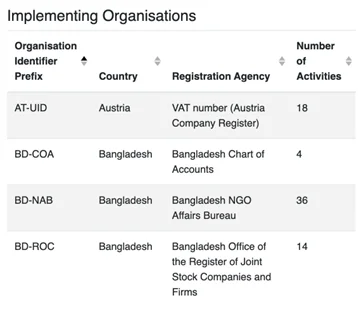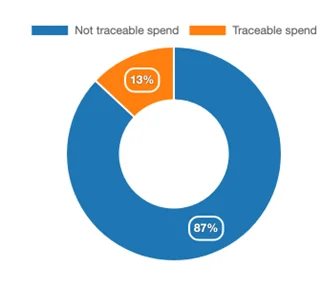Tracking funding to local and national responders on IATI Humanitarian Data Portal

This post is written by Mark Brough, Senior Technical Advisor working with Development Initiatives.
Since the Grand Bargain was agreed in 2016, there has been an increasing focus on the need to scale up funding to local and national actors. To monitor the commitments made by humanitarian actors, it's crucial that data is available on which organisations are receiving funding from international donors. This data makes it possible to understand whether sufficient funding is reaching organisations based in affected countries.
Over the course of 2022, Development Initiatives has been working with others to improve the way that government entities are identified in their IATI data. We provided an update on the progress of this work in August, with the result that GAVI and FCDO have already begun to precisely identify which government entities they are working with.
Identifying organisations receiving funding
More recently, we have been developing new analytical tools to show which sorts of organisations are receiving funding. Today we are pleased to announce the release of two new features available on the IATI Humanitarian Data Portal. You can see these features on the Signatory Data page for each organisation (for example, the UK Foreign, Commonwealth and Development Office, the Netherlands, or USAID). We think these updates could have direct applicability for work to monitor Grand Bargain localisation commitments.

Firstly, you can see where organisations receiving funding are registered. For example, you can see that FCDO is funding NGOs or companies registered in Bangladesh, India, Kenya, Mozambique, Nigeria, Nepal, Pakistan, Tanzania and South Africa. You can also see that the Netherlands is funding NGOs or companies registered in Ghana and Kenya, and that USAID is funding NGOs or companies registered in Benin, Ghana, India, Kenya, Lebanon, Malawi, Mozambique, Nigeria, Uganda and South Africa. In the future, we think it would be useful to see this information in terms of the amount and share of spending going to these organisations. It would also be useful to be able to cut the data in different ways - for example, to only look at spending for ongoing projects, or spending in a particular year.

These numbers might seem low, and one of the reasons for that is that the calculations currently look at all years. The Netherlands’ data goes back to 1997, and traceability has only begun to be implemented in the last decade. Focusing on ongoing projects, or spending in recent years, is likely to give a much clearer picture. We would like to work on that more in the future.
Recommendations
Grand Bargain signatories, publishing to IATI, should accelerate progress around the capture of organisation identifiers in their systems.
- Grand Bargain signatories, publishing to IATI, should accelerate progress around the capture of organisation identifiers in their systems. In some cases, this may require system adjustments to add a field in project management systems, to capture the company or charity registration number for each organisation. In addition, signatories should reach out to country offices or project officers, to encourage these fields to be consistently filled out in project management systems.
- Signatories should consider establishing a clear methodology, building on the work shared above, to use IATI data to track Grand Bargain localisation commitments. That will require a bit more work. Whether or not an organisation is registered in the country receiving funding gets us close to the GB definition of local and national actors, but does not capture whether an organisation is a local affiliate of an INGO, for example. However, manually identifying funding to such organisations should also become significantly simpler with such a methodology.
As ever, we welcome questions and feedback on all of this work. Please get in touch with us at [email protected].